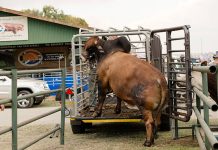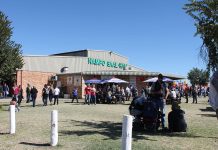
The views expressed in our weekly opinion piece do not necessarily reflect those of Farmer’s Weekly.
South Africa’s agriculture sector is vital to the country’s continued growth and development, and is an important source of job creation, GDP, food security and even tourism.
The International Trade Administration in the US describes the commercial agriculture sector in South Africa as the backbone of the agricultural economy, noting that in 2020 agriculture had the best growth rate of all economic sectors at 13,1%.
Unfortunately, energy-related challenges pose a significant obstacle to the sector’s continued growth. In recent months, farmers have faced a 9,6% hike in Eskom tariffs, an increase in the price of diesel to R21,47/ℓ due to the Russia-Ukraine war, and ongoing load-shedding. The lack of affordable, reliable, resilient energy sources can wreak havoc on commercial farms’ productivity, profits and ability to scale.
Emerging energy-storage technology offers an optimal solution to these challenges, particularly when coupled with renewables such as solar power, but until recently the price of batteries has been prohibitive, especially for mid-sized commercial farms.
This is changing, however. A recent report by GreenCape, a Western Cape-based green economy non-profit organisation, states that battery prices have fallen by 82% over the past decade, and are likely to fall even further due to improvements in scale, technology and manufacturing.
Load-shedding and outages
An on-farm solar-power system switches off during power cuts and load-shedding if it’s grid-connected and without battery storage. Installing batteries enables a farm to continue running cold stores, packhouses, irrigation systems and other energy-dependent operations during a grid power outage.
If solar power is available, it can be integrated with the battery system to keep batteries charged. Batteries can replace diesel back-up generators, with the added benefits of eliminating fuel costs, having a much faster switchover (22 milliseconds), and minimising maintenance.
The battery component should be capable of meeting the farm’s peak power use and expected total energy needs during load-shedding. There is no real limit to how much energy a battery system can store, but an efficient set-up will not be over- or undersized.
Under most commercial electricity tariff systems, farms are charged for their maximum power demand (measured in kVA) during a billing period. Even when maximum power use takes place only for a very brief period, the cost of this demand can make up the bulk of a monthly energy bill.
By integrating battery storage, a farmer can use the stored energy to fulfil the operation’s power needs above a set threshold, ‘shaving the peak’ of the demand on the grid and substantially reducing utility charges. A well-designed battery system can sometimes even eliminate kVA charges.
Batteries complement solar energy
Most farmers find themselves on time-of- use tariffs, where the cost of energy changes according to how much demand there is on the national grid.
Peak rates can often be more than four times as costly as off-peak rates. Solar power alone can help reduce daytime energy costs. However, solar energy is often not available during peak periods such as early mornings and evenings, especially during winter when days are shorter. This hurts the economics of solar power and leaves farmers exposed to peak tariffs.
With batteries installed, farms can ‘harvest’ energy during times when grid energy costs are lowest, or when there is surplus energy from the solar plant, and then use the energy during peak-rate times.
With batteries, it’s possible to eliminate all peak period energy costs. In ideal instances, energy from solar plants and batteries can be sold to the grid at a one- to-one ratio against the cost of importing it.
This makes it possible to harvest energy into the battery when energy costs are low, and sell to the grid when the value of the energy is high, a practice called arbitrage. Energy arbitrage will become more common as grid regulations evolve and municipalities warm to the concept of procuring energy from private sources.
Enabling off-grid energy
Solar power without a battery system requires a grid connection, which involves ongoing charges even if a farm isn’t actually using any energy from the grid.
Some rural farms even see line-rental charges paid to compensate other landowners for hosting servitudes to deliver power on their land, in addition to payments made to Eskom or their municipality. Moreover, any farm relying on a grid connection will have to suffer load-shedding, as previously discussed.
Nonetheless, going off-grid is not to be taken lightly. To ensure reliable access to energy, a very high ratio of solar-to-battery storage is required, and back-up diesel generators might have to be retained in order to keep hardware costs down to reasonable levels.
This is a task that requires highly specialised technical expertise, making it critical to seek a reputable energy-service partner that can oversee the optimal design, installation, monitoring and maintenance of a solar and storage system on behalf of a farm to ensure guaranteed energy availability.
How to afford it?
There are a number of ways for farmers to finance energy storage systems, from solar leasing agreements to self-financing and financing from a bank, and each has its own considerations.
When calculating the economics of installing storage-enabled solar power, it’s critical to factor in the cost of lack of energy availability, called ‘the cost of unserved energy’. It is common to perceive the cost of energy in pure per kWh terms, which makes equivalent costs for delivered kWh from a solar and storage system seem high. However, when considering the cost to operations of not having reliable energy, or relying on diesel fuel for energy access, the economic case for solar and storage will always come out on top.
Energy storage system leasing
Often, the most economical and efficient way for a farmer to install a storage-enabled solar plant is to lease a system from a dedicated solar and storage energy solutions provider.
This option eliminates the need for upfront capital, costly loans and extensive bureaucratic processes, and frees the farmer from having to bear the ongoing time and cost requirements of managing, monitoring, maintaining and insuring the system.
The ideal energy-storage leasing partner will have the expertise and capabilities to design, source, install and manage the ongoing maintenance and monitoring of the solar power and energy storage equipment, making the process trouble-free.
It’s also crucial that the leasing company has expertise in both solar power and storage systems to ensure that the systems integrate and complement each other to maximise value and effectiveness. As the ultimate owner of the equipment, the leasing company should have a sophisticated understanding of regulations and compliance.
Self-financing
If a farmer has the capital and would like to become a power producer, self-financing is an option. Here, an independent energy consultant’s services are critical to help navigate the supply of equipment, as well as the regulatory and technical hoops to jump through to get an optimal system designed and connected to the grid in a compliant manner.
An illegally installed system, or one that is not registered with the relevant bodies, may make one liable for fines, and won’t be able to feed energy back into the grid.
Bank finance
Approaching a bank can be a safer way to choose approved suppliers, as banks often have a list of solar installers and equipment for which they can provide loans. Banks may require farmers to put in some of their own capital, with loan-to-value ratios of 30% to 70%. Loan terms are variable, and it’s becoming common for farmers to secure loans of up to 10 years.
Visit thesunexchange.com.












